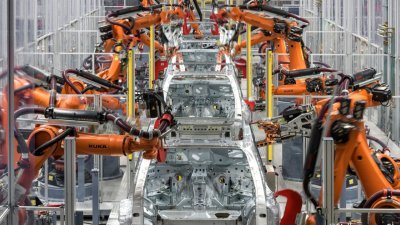“我们无法阻止风浪,但我们可以学会带著智慧去驾驭它。”
现在的商业世界,小问题常常牵一发动全身。一则政策通告、一项物流延误,或者一个报关新条例,就足以打乱财务安排、出货节奏,甚至客户信任。
马来西亚的企业主对此应该不陌生:
• 一切看似顺利,但一个港口堵塞或税务变更,整个订单计划就被打乱;
• 冷链物流成本大幅上涨,但客户还是理直气壮地要求准时送达;
• 新环保政策带来突击检查,仓储和发货节奏顿时慢了几拍。
这些问题看似分散,其实源自一个共同根源——企业系统之间的互动失调。这正是系统思维擅长解决的切入点。
商业领袖必备:学会问“为什么”,而不是只问“发生了什么”
为什么“全局观”这么重要?
很多中小企业对运营效率非常执著,但却忽视了背后的系统性因素。系统思维要我们理解各个部门之间的互动关系,也提醒我们:隐藏风险往往是联动的。
忽视认证合规,代价不小。
有一家公司签下了大客户合约,但错过了最新ESG(环境保护、社会责任和公司治理)审核要求,结果临门一脚被取消订单。
依赖单一合作商,风险集中。
另一家企业深度依赖某亚洲物流商,结果遇到线路变更和海关审核升级,出货延误、成本失控、客户流失接连而来。
不同环节,牵一发而动全身。
风险从不孤单。一次错误往往牵动运营、资金、市场甚至管理决策。如果不从系统角度去“重画地图”,补洞也补不过来。
面对不确定年代,企业必须更灵活、更有远见。
前瞻力和应变力,不再是锦上添花,而是基本功。
系统思维的价值,就在于它能把复杂的局面拆成清晰的行动路径。以下是我亲历或观察的真实案例:
打破财务孤岛,跨部门合作才有力量。
一家制造商习惯凭库存和销售数据做采购决策,结果错失原料采购良机。后来加入法务、市场与贸易同仁共同评估,决策质量明显提升。
提前画图识别风险,比事后灭火更划算。
一家食品企业在港口延误中,快速启动应急采购方案,是因为他们早早画好了一张“瓶颈应对图”。
做个“如果”游戏,成本不高但价值很大。
一家家具出口商预测汇率波动会对价格造成5%影响,于是提前调整合同条款,保护了利润。
用简单仪表盘,建立风险“预警雷达”。
一家物流公司整合了送货准时率、投诉量、员工出勤等指标,结果在数据异常那一周,就察觉到可能政策将变,抢先调整安排。
厨房会议制,胜过复杂流程。
某零售集团每周开一次非正式讨论会(厨房会议制),轮流分享行业动态。有一次,就是在会议中捕捉到了即将实施的新税制,提前调整了价格策略,避免了后续冲击。
值得深思的问题与一些个人感悟
风浪永远在,掌舵的人要有方向,也要有方法。
系统思维不是万能钥匙,但它是雷达,是指南针,让你在未变之前先有准备。我的经验告诉我,真正厉害的企业,不一定最有钱,但一定最会看局。他们善于提问、乐于倾听,更重要的是,他们敢于连接看似不相关的信息。
马来西亚的企业主本就聪明、坚韧、有本事。要走得更远,我们只需多一分“抬头看”的思维。系统思维不是学术词汇,它是你的生存武器、也是让好企业走向卓越的那一把钥匙。
林虹妗《在不确定时代保持企业韧性:写给马来西亚企业家的系统思维笔记》英文版:SUSTAINING BUSINESS RESILIENCE IN TURBULENT TIMES: A SYSTEMS THINKING NOTE FOR MALAYSIAN BUSINESS LEADERS
"We can't stop the waves of disruption, but we can learn how to ride them with wisdom."
In today’s business world, one small shift can trigger a much larger impact. A change in trade policy, a short logistics delay, or a surprise tax update can ripple across the entire operation. Budgets fall off track, deliveries stall, and customer trust takes a hit.
These are not isolated events—they are signs of a system under pressure. That’s exactly where Systems Thinking comes in: to help us connect the dots, see beyond the surface, and act with clarity.
DON’T JUST ASK WHAT HAPPENED—ASK WHY IT HAPPENED
Why a bigger picture matters: Too often, we focus on fixing immediate issues without looking at the root causes. We rush to meet KPIs, but forget to ask what’s reinforcing the patterns behind the problems.
ESG requirement ignored: A company signed a large contract but overlooked the client’s new ESG audit standards. The deal was cancelled at the last minute. It wasn't just a quality issue—it was a systems blindspot.
Logistic reliance: Another business relied on one logistics partner for all outbound delivery. When the route changed and inspections increased, shipments delayed, costs spiraled, and clients pulled back.
Systemic reality: The pain isn’t in one department. It spreads across operations, cash flow, marketing, and strategy. If we only fix what’s visible, we’ll miss what’s really broken.
AGILITY AND FORESIGHT: YOUR NEW SURVIVAL TOOLKIT
Why we must look ahead: In an environment full of change, reacting faster is good—but anticipating better is smarter. Systems Thinking helps us translate complexity into clear actions.
Cross-functional collaboration: A manufacturing firm relied purely on inventory data to plan procurement. When costs spiked, they realized they hadn’t factored in legal or customer insights. After involving other departments, decisions improved significantly.
Visual risk mapping: A F&B company pre-drew its bottleneck response map. When port congestion hit, they activated alternate sourcing immediately and kept customers informed.
Scenario planning: A furniture exporter simulated a 5% exchange rate fluctuation and adjusted their pricing terms. That small step protected margins when the market shifted.
Early warning via dashboards: A logistics firm tracked delivery timing, complaints, and staff patterns. A spike in data helped them detect a policy shift in advance.
Weekly strategic huddles: One retail chain ran informal “kitchen meetings” to share news and concerns. In one of these chats, they picked up on a tax shift and acted ahead of competitors.
REFLECTIONS & POINTS WORTH THINKING ABOUT
Systems Thinking won’t solve everything. But it gives us radar. It helps us see what's coming, not to panic, but to prepare.
In my journey with Malaysian businesses, I’ve found that the most successful aren’t the ones with the biggest factories or fanciest tools. They’re the ones who pause, ask good questions, listen well, and stay curious.
Malaysian SMEs are full of heart, grit, and ideas. What we need next is perspective. With a bit more “eyes-up” thinking, we don’t just manage the system, we master it.
要看最快最熱資訊,請來Follow我們 《東方日報》WhatsApp Channel.


















